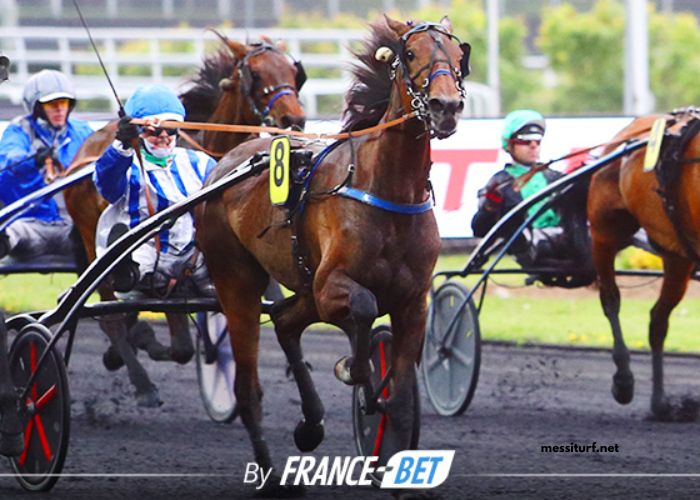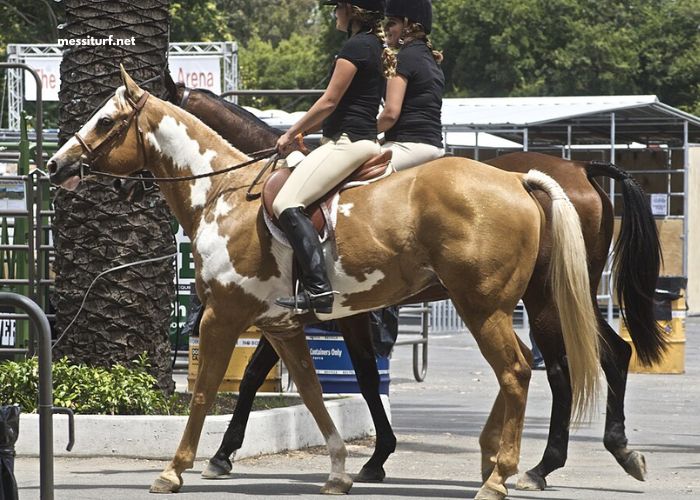The world of horse racing is filled with excitement, strategy, and a deep understanding of the sport’s nuances. One of the most sought-after strategies in horse racing is Le Triangle Du Quinte. This method is known for helping punters predict the winners of races with greater accuracy and confidence. Whether you are a seasoned bettor or new to horse racing, understanding Le Triangle Du Quinte can offer valuable insights into how to approach betting with more precision.
Le Triangle Du Quinte has gained popularity due to its potential for generating profitable outcomes. It is a unique approach to studying races, using a combination of factors and strategies to select the most likely horses that will finish in the top positions. In this article, we will explore what Le Triangle Du Quinte is, how it works, and why it has become such an essential tool for those looking to succeed in horse racing betting.
What Is Le Triangle Du Quinte?
Le Triangle Du Quinte is a method used in horse racing to help bettors predict the top finishers in a race. The name “triangle” comes from the specific way the selection process is structured, with three primary components that need to be analyzed and considered. These three components include the horse’s form, the jockey’s performance, and the track conditions. By evaluating these factors in depth, bettors can narrow down their choices and increase their chances of selecting the correct winners.
The core idea behind Le Triangle Du Quinte is that horse racing is influenced by multiple variables, and by focusing on these three elements, you can improve your overall betting strategy. Unlike more random betting approaches, Le Triangle Du Quinte is a more systematic and analytical method that requires attention to detail and a thorough understanding of the sport. When applied correctly, it can lead to more successful bets and greater enjoyment of the racing experience.
How Does Le Triangle Du Quinte Work?
The process of applying Le Triangle Du Quinte involves closely evaluating three main criteria: the horse’s form, the jockey’s performance, and the track conditions. Each of these factors plays a significant role in determining how a horse will perform during a race, and by analyzing them together, you can gain insights into the likely outcomes.
First, assessing the horse’s form is crucial. This involves reviewing the horse’s past performances, including its wins, losses, and how well it has performed under various conditions. Horses that have been consistent in their performances are more likely to perform well in future races. By studying the form of a horse, you can identify patterns that indicate its potential success in the upcoming race.
Next, the jockey’s performance plays a key role. The skill and experience of the jockey can make a significant difference in the outcome of a race. Experienced jockeys understand how to navigate different track conditions and manage a horse’s energy throughout the race. By evaluating the jockey’s track record, you can determine how well they might perform in a given race, and this will help you make more informed betting decisions.
Finally, track conditions are an essential factor in Le Triangle Du Quinte. Different tracks present different challenges, and understanding the condition of the track can be vital in predicting a horse’s performance. Some horses perform better on wet or muddy tracks, while others excel on dry, fast tracks. By analyzing the current track conditions, you can adjust your selections accordingly and increase the likelihood of picking a winning combination.
Why Is Le Triangle Du Quinte Important for Bettors?
The importance of Le Triangle Du Quinte lies in its ability to bring structure and logic to the often chaotic world of horse racing betting. Horse racing is filled with variables, making it difficult to predict the outcomes with certainty. However, by narrowing the focus to three key components, Le Triangle Du Quinte allows bettors to make more informed decisions rather than relying on luck or vague guesses.
The beauty of Le Triangle Du Quinte is that it works across different racing formats and can be applied to various types of races. Whether you’re betting on a short sprint race or a longer distance event, the core principles of Le Triangle Du Quinte remain the same. This versatility makes it a useful tool for both novice and experienced bettors, providing a clear framework to follow when placing bets.
Furthermore, Le Triangle Du Quinte encourages bettors to study the races in more depth, helping to improve their overall knowledge of the sport. As you gain experience using this method, you’ll develop a better understanding of how horses, jockeys, and tracks interact to influence race outcomes. This knowledge can be invaluable, not just for betting but also for truly appreciating the complexities of horse racing.
What Are the Key Benefits of Using Le Triangle Du Quinte?
The primary benefit of using Le Triangle Du Quinte is the increased likelihood of selecting winning horses. By taking into account the horse’s form, the jockey’s performance, and the track conditions, bettors are able to make more calculated and informed decisions. This reduces the element of chance and helps bettors move away from random betting practices that have little to no basis in the race’s dynamics.
Another significant advantage is the ability to fine-tune your betting strategy. While other betting systems might only focus on one or two factors, Le Triangle Du Quinte provides a comprehensive approach that considers the full spectrum of variables affecting race outcomes. This method allows bettors to make better predictions, which can ultimately lead to greater success and profitability.
Additionally, Le Triangle Du Quinte helps bettors to avoid being swayed by hype or popular opinion. In horse racing, it’s common for certain horses to gain media attention, which may cause bettors to place bets based on popularity rather than real performance data. With Le Triangle Du Quinte, bettors can make decisions grounded in facts and data, allowing them to avoid following the crowd and increase their chances of success.
How Do You Implement Le Triangle Du Quinte in Betting?
To implement Le Triangle Du Quinte effectively, bettors must first gain a thorough understanding of how to evaluate the three key components: horse form, jockey performance, and track conditions. This requires research and attention to detail, but it is a highly rewarding process. Start by reviewing past races and assessing how each factor influenced the outcome.
Once you have gathered this information, you can begin to apply Le Triangle Du Quinte to upcoming races. For each race, consider the form of each horse in the race, the experience and recent performances of the jockeys, and the current track conditions. After analyzing these elements, you will be able to narrow down your betting choices and increase the chances of placing a winning bet.
As with any betting strategy, it’s important to be disciplined and consistent. While Le Triangle Du Quinte can improve your chances, it does not guarantee success in every race. Bettors should still be prepared to accept losses and understand that no method is foolproof. By consistently applying the principles of Le Triangle Du Quinte, however, you will be able to improve your betting skills over time and become more proficient in selecting the right horses for each race.
What Are Some Common Mistakes to Avoid with Le Triangle Du Quinte?
While Le Triangle Du Quinte is a highly effective betting method, there are a few common mistakes that bettors should avoid. One mistake is overemphasizing one factor at the expense of the others. For example, focusing solely on the horse’s form without considering the jockey’s performance or track conditions can lead to poor betting decisions. To maximize the effectiveness of Le Triangle Du Quinte, all three components should be given equal attention.
Another common mistake is failing to adapt to changing conditions. Le Triangle Du Quinte relies on accurate and up-to-date information about the horses, jockeys, and tracks. If any of these factors change before a race, bettors must adjust their predictions accordingly. For instance, if the track conditions change drastically due to weather, it could alter how certain horses perform. Being flexible and responsive to these changes is essential for success with Le Triangle Du Quinte.
Finally, some bettors may place bets based on emotions or biases rather than solid analysis. It is essential to approach Le Triangle Du Quinte with a clear and objective mindset. Betting based on gut feelings or favoritism towards certain horses or jockeys can lead to disappointment and lost opportunities.
Conclusion
Le Triangle Du Quinte is a powerful tool for horse racing bettors who want to make more informed and strategic decisions. By focusing on three key components – horse form, jockey performance, and track conditions – bettors can increase their chances of success and move beyond random betting methods. While no betting system is perfect, Le Triangle Du Quinte offers a structured and systematic approach that can significantly improve your chances of winning.
By applying this method consistently, bettors can develop a deeper understanding of horse racing and refine their betting strategies for long-term success.



